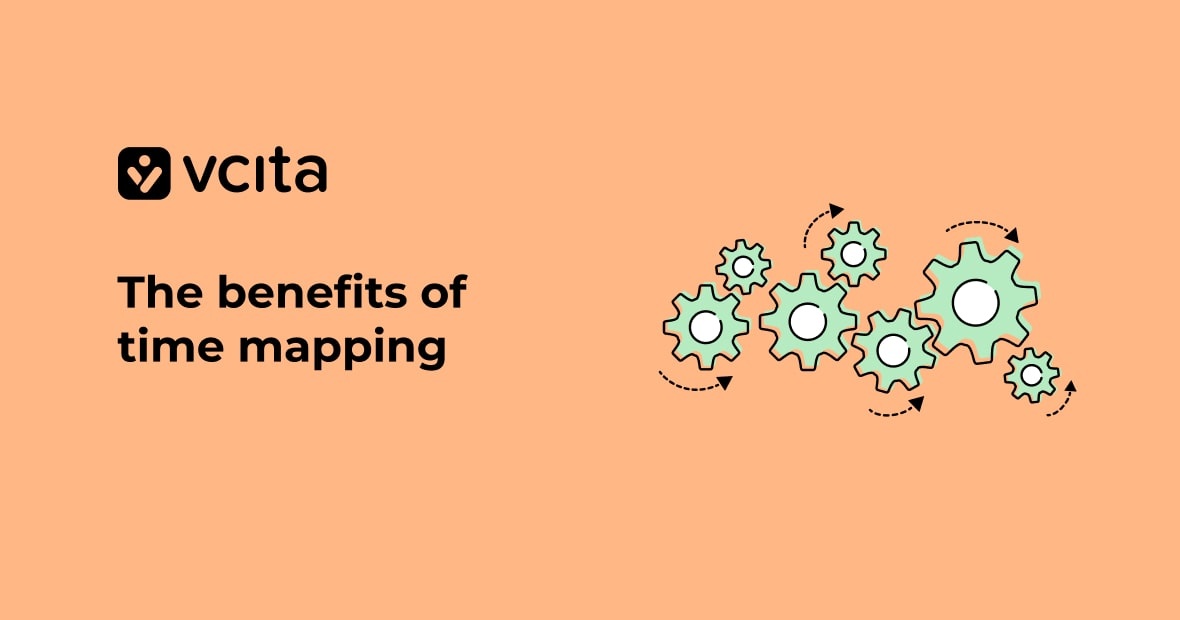As a small business owner, it’s easy to feel like you never have enough time for all the important tasks and top priorities in your work and life. Thankfully, time mapping can help you plan your most important tasks and not forget about family time, so you can spend your time more effectively.
Creating and filling out your own time map shows you exactly how much time you’re spending and where, empowering you to better manage your time. Read on to learn more about the many time management techniques and benefits of time mapping for small business owners like you.
What is time mapping and how can it benefit small business owners?
The struggle of juggling tasks
As a small business owner, your days are likely a whirlwind of bouncing between different tasks. From managing employees to dealing with customers, handling finances, and so much more – it can feel impossible to get it all done. You find yourself constantly jumping from one fire to the next without a clear plan.
The power of time mapping
This is where time mapping comes in. It’s a simple yet powerful time management technique that helps you regain control of your day. The core idea is to dedicate specific time slots for your most important tasks and top priorities. That way, you ensure the vital activities don’t get pushed aside amidst the chaos.
The benefits of time mapping
By time mapping and time blocking your week in advance, you’ll reap some powerful benefits:
- Spend your time more intentionally on high-impact work
- Improve productivity by batching similar tasks together
- Achieve better work-life balance by planning personal time
- Reduce stress from the constant context switching
Creating your time map: mapping out your week
Visualize your ideal week
To create a time map, start by listing out all the key tasks, meetings, and responsibilities you juggle each week. Next, block out time slots on a weekly calendar for when you’ll tackle each item. Be realistic about how much focused time you’ll need. Don’t forget to schedule breaks, family time, and breathing room too.
Schedule time for top priorities
One of the biggest benefits of time mapping is being able to clearly see how you’ll spend your time each week. First, block out non-negotiable items like appointments, meetings, family time, and self-care. Then fill in the important tasks and top priorities for your business. Schedule buffer times between activities to prevent your days from feeling overly crammed.
Use a time mapping template
It’s much easier to create a time map when you use a template designed for it. Look for one with hourly or half-hour time slots across the days of the week. Many time mapping apps and tools offer editable templates to get you started. As you fill out your time map, aim to block similar tasks together in larger chunks. For example, group marketing tasks, client work, administrative duties, etc. This boosts productivity by minimizing context switching between different types of work.
Adjust as you go
After you’ve filled out your time map for the week, review it. Does it realistically reflect how you want and need to spend your time? If not, make adjustments – move things around, add in missed tasks, or remove lower priorities. Your time map won’t be perfect from day one. Expect to tweak and refine it over time as you get a better sense of how long tasks truly take. The key is being aware of how you spend your time, and adjust accordingly.
Review regularly
Reviewing your time map regularly is key. It allows you to adapt it based on your actual time spent on tasks versus planned. Monitoring where your time really goes reveals which time management techniques need improvement.
The benefits of time mapping: improved work-life balance and productivity
Gain clarity on where time is spent
As a busy small business owner, your time is precious. Creating a time map helps you visualize exactly where those fleeting hours and minutes are going each day. Without this clarity, it’s easy for important tasks to slip through the cracks while you spend too much time on lower priorities. Being aware of how you spend your time is the first step to taking control of your schedule.
Prioritize top goals and responsibilities
Once you’ve filled out your time map, you can identify the biggest time drains and reallocate those hours to what really matters. Use time blocking and time mapping together to carve out dedicated time slots for your highest priorities, whether that’s billable client work, business development, or family time. Time mapping combined with time blocking ensures your most important responsibilities get the focused attention they deserve.
Achieve an ideal work-life balance
For many small business owners, the lines between work and personal life are blurred. Creating a time map makes those boundaries clear again. By consciously deciding how much time to allocate for client projects, administrative tasks, marketing, etc. you can ring-fence quality personal and family time too. Striking this balance leads to higher life satisfaction, reduced stress and burnout, and better productivity when you are working.
Time management tips: implementing effective time tracking and planning
Creating your weekly time map
To create a time map, start by filling out your typical weekly schedule. Break it down into hourly or 30-minute time slots across each day. Don’t forget to include time for breaks, family time, and other non-work commitments for a realistic work-life balance.
As you fill out your time map, be honest about the amount of time you actually spend on different activities. This could include client work, administrative tasks, marketing efforts, and any other responsibilities. Having an accurate picture is crucial for effective time management.
Using time tracking tools
While creating a manual time map is helpful, using time tracking software or apps can make the process even easier. Tools like vcita’s built-in time tracking feature allow you to log time spent on various tasks with just a few clicks.
Not only does this automate time mapping, but it also provides detailed reports and analytics on where your working hours are going. This data-driven approach takes the guesswork out of managing your time and enables you to make informed decisions.
Implementing time blocking
Once you have a clear understanding of how you currently spend your time, you can start implementing time blocking techniques. This involves dedicating specific time slots or “blocks” for certain tasks or projects during your workday.
For example, you may choose to block off the first two hours for your most important work that requires deep focus. Another block could be set aside for administrative tasks or client meetings. By thoughtfully planning your day in this manner, you can increase productivity and ensure that your top priorities receive the attention they deserve.
Time mapping can put you back in control
By creating a time map and blocking out your time into specific slots for top priorities and important tasks, you can really reap the benefits of time mapping for your small business. When you time map your week in this focused yet flexible way, you can better juggle all your responsibilities as a small business owner, and enjoy increased productivity, less overwhelm, and more control over your schedule.




























